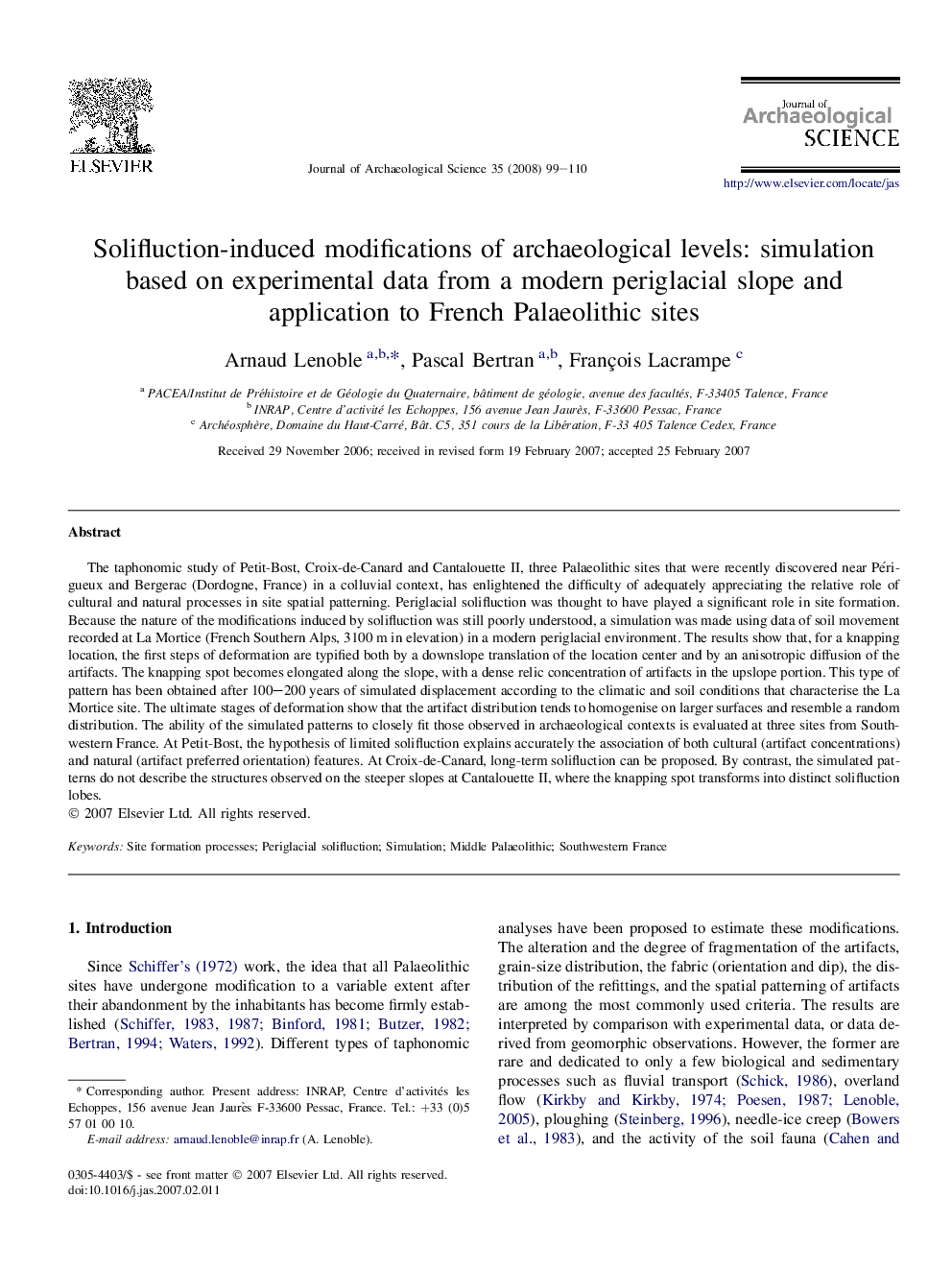| کد مقاله | کد نشریه | سال انتشار | مقاله انگلیسی | نسخه تمام متن |
|---|---|---|---|---|
| 1037102 | 943909 | 2008 | 12 صفحه PDF | دانلود رایگان |

The taphonomic study of Petit-Bost, Croix-de-Canard and Cantalouette II, three Palaeolithic sites that were recently discovered near Périgueux and Bergerac (Dordogne, France) in a colluvial context, has enlightened the difficulty of adequately appreciating the relative role of cultural and natural processes in site spatial patterning. Periglacial solifluction was thought to have played a significant role in site formation. Because the nature of the modifications induced by solifluction was still poorly understood, a simulation was made using data of soil movement recorded at La Mortice (French Southern Alps, 3100 m in elevation) in a modern periglacial environment. The results show that, for a knapping location, the first steps of deformation are typified both by a downslope translation of the location center and by an anisotropic diffusion of the artifacts. The knapping spot becomes elongated along the slope, with a dense relic concentration of artifacts in the upslope portion. This type of pattern has been obtained after 100–200 years of simulated displacement according to the climatic and soil conditions that characterise the La Mortice site. The ultimate stages of deformation show that the artifact distribution tends to homogenise on larger surfaces and resemble a random distribution. The ability of the simulated patterns to closely fit those observed in archaeological contexts is evaluated at three sites from Southwestern France. At Petit-Bost, the hypothesis of limited solifluction explains accurately the association of both cultural (artifact concentrations) and natural (artifact preferred orientation) features. At Croix-de-Canard, long-term solifluction can be proposed. By contrast, the simulated patterns do not describe the structures observed on the steeper slopes at Cantalouette II, where the knapping spot transforms into distinct solifluction lobes.
Journal: Journal of Archaeological Science - Volume 35, Issue 1, January 2008, Pages 99–110